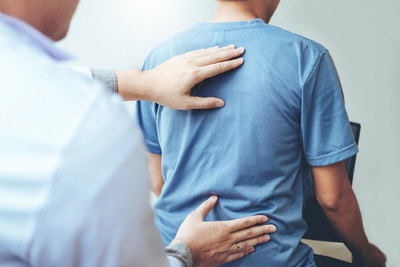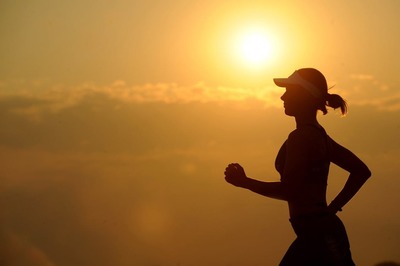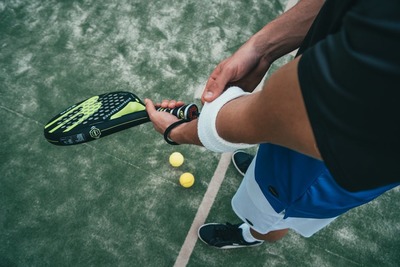Low back pain is one of the most common musculoskeletal issues troubling the U.S. population.
Low back pain is a general term, and many conditions can be the culprit for causing your pain in the lower back, hips and sciatica type pain.
In this breakdown of low back pain we discuss some of the most common conditions we see in our office.




Lumbar Disc Disorders
The intervertebral discs are composed of two components, a tough outer ring of fibrous tissue called the annulus fibrosis, and a jelly-like center inside the annulus fibrosis called the nucleus pulposus. The structure is then held together by ligaments on the front and the back of the vertebrae. Additional support is provided by muscles of the trunk.
Lumbar disc disease is the result of a normal aging process
This may lead to the breakdown and degeneration of tough outer ring of the disc (annulus fibrosis) allowing the inner core (nucleus pulposus), to bulge out. This is considered a bulging disc. This puts pressure on the outer ring of the disc, which may cause low back pain.
As further degeneration of the disc continues, or with continued stress on the lumbar spine, the inner jelly-like core may rupture out from the outer ring causing a ruptured, or herniated, disk.
However, the fragmented disc material can inflame or put pressure on the spinal nerves leading to an increase in sciatic leg pain, weakness, numbness, or changes in sensation in one or both legs. Most disc herniations occur in the lower lumbar spine at L4-L5 and L5-S1 levels. Occasionally, severe trauma can cause a normal disc to herniate or may cause an already herniated disk to worsen.
Risk Factors of Lumbar Disc Disorders
- Age and Gender – the highest incidence in men between the ages of 30 and 50.
- Obesity – being overweight puts added stress on lumbar discs.
- Sedentary lifestyle – lack of exercise and poor core body strength.
- Smoking – Smoking decreases oxygen supply to the discs causing more rapid degeneration.
- Improper lifting – using your back muscles instead of your legs to lift heavy objects. Twisting while lifting
- Posture – hyperlordotic lumbar curvature, anterior pelvic tilt (lower cross syndrome).
- Repetitive activities that strain your spine – jobs that require constant lifting, pulling, bending, or twisting.
- Frequent driving – staying seated for long periods and the vibration from the car can put pressure on your discs.
The onset of pain can be sudden or gradual after an injury.
However, patients may not recall a prior injury or a precise time the condition began because it is often preceded by frequent episodes of less severe low back pain that usually resolved. Pain is usually characterized by a sharp, shooting, or electrical pain that may be aggravated with movement, changing positions, sneezing, coughing, or prolonged sitting and standing. The pain is usually relieved with rest and a recumbent position.
The main physical causes of this condition are:
- Overexertion
- Falls
- Poor movement mechanics
- Poor posture
- Heavy lifting
However, with the proper education, you can protect yourself from many of these causes.
A comorbid factor of this condition is often a desk job that involves sitting for most of the day. This type of patient usually has poor sitting posture, which can lead to a weakening of your spinal erectors and destabilize the spine, contributing to the condition. The importance of a strong core and training your spinal muscles cannot be overstated.
In cases where the injury stems from a problem related to overuse, poor posture or improper exercise, there are steps that can be taken to help avoid these injuries from happening.
Proper instruction about your postural habits can reduce the detrimental effects of sitting on the spine, as well as education about correct lifting form can reduce these episodes of low back pain and help you build a healthy spine.
Facet Syndrome
Facet syndrome is a common injury that can contribute to back pain. Over half of facet syndrome cases occur in the neck (cervical spine), and a third occurs in the low back (lumbar spine). Facet joints are the small joints in the back of the spine that are responsible for much of rotational movement and limits side-to-side movement. The pain is often worst when moving from a sitting position to a standing position or moving from a bent-over position back to an upright standing position.
The main physical causes of this condition are:
- Excessive weight
- Overuse (sports or labor)
- Whiplash/motor vehicle accident
- Pre-existing arthritis
- Sitting for long periods of time
The good news is that with the proper education, you can protect yourself from many of these causes.
The primary sufferers of this condition, especially chronic cases, often are in poor physical condition with weak stabilizing paraspinal muscles.
A comorbid factor of this condition is often a desk job that involves sitting for most of the day. This type of patient usually has poor sitting posture, which can lead to a weakening of your spinal erectors and destabilize the spine, contributing to the condition. The importance of a strong core and training your spinal muscles cannot be overstated.
Lumbar Stenosis
Often this results in compression of the spinal cord, which can lead to pain, numbness, discomfort and radiating symptoms. What the mechanism of this is occurring is usually caused by the degenerative changes of aging. However, there are other causes.
- Degeneration of the lumbar spine
- Lumbar disc herniation putting pressure on the spinal cord
- Osteoporosis
- Dwarfism (achondroplasia)
- Tumor
History and Symptoms of Lumbar Disc Disorders
Intermittent or constant lower back pain and/or pain in the buttock, leg and/or foot pain, numbness or a tingling sensation in the leg and/or foot, weakness in the leg and/or foot, decreased reflexes in the knee or ankle, and changes in bowel or bladder function.
The symptoms will vary depending on if and where the disc has herniated, and what spinal nerve root is affected. Leg pain is usually greater than low back pain with disc herniations and nerve root involvement. However, if there are only annular tears without herniation, the pain will be localized to the low back and buttock.
In our office, depending on what diagnosis of low back pain you have, we build a short, concise treatment plan for you that targets the direct and indirect cause of the pain.
Many of our low back pain patients get a combination of light Chiropractic adjustments, Active Release Technique, Corrective rehab exercises, and much more. Our goal is to have you achieve lifelong resolution of the pain, not just a temporary fix.
While it is difficult or impossible to combat normal aging of the spine, there are some habits and tips you can use to reduce this condition related to the other causes.
As far as osteoporosis goes, make sure you are meeting your recommended calcium intake as well as incorporating weight bearing activities into your exercise routine (lifting weights). Post-menopausal women tend to be more susceptible to this condition and should ensure they are doing everything they can to prevent osteoporosis.
Degeneration of the spinal column is inevitable with aging and may reflect normal changes in an aging spine.
Lumbar Strain/Sprain
A lumbar strain is when an injury occurs to the muscles of the low back. A sprain, on the other hand, is an injury to the ligaments or joints; both, however, have similar pain and symptom patterns. When these muscles or ligaments become injured, it can lead to dysfunctional movements, and cause instability in the spine. Patients suffering from this diagnosis often have pain when attempting to walk, sit, exercise and can even occur during sleep.
Home care will consist of pain-relief repetitive positional exercises and lumbar stabilization exercises.
In most cases, bed rest will not be recommended as the sooner you are up and moving, the better the prognosis. Once pain and inflammation have decreased, we will continue working on lumbar stabilization and progress into proprioceptive training. We will evaluate muscle imbalances using posture and movement patterns with the goal of restoring good biomechanics and core body strength. Your home care will emphasize the progression of stabilization protocols and corrective exercises. If you fail to respond to conservative treatment, or in cases of severe neurological loss, a referral for a surgical consultation will be recommended.
Treatment of Lumbar Disc Disorders
With disc herniations, the first few days of care will focus on centralizing (reducing) leg pain, decreasing inflammation, and preventing further neurological loss by decompressing nerve root impingement and reducing the disc herniation. Osseous mobilization and manipulation and soft tissue therapy may be administered as tolerated.
